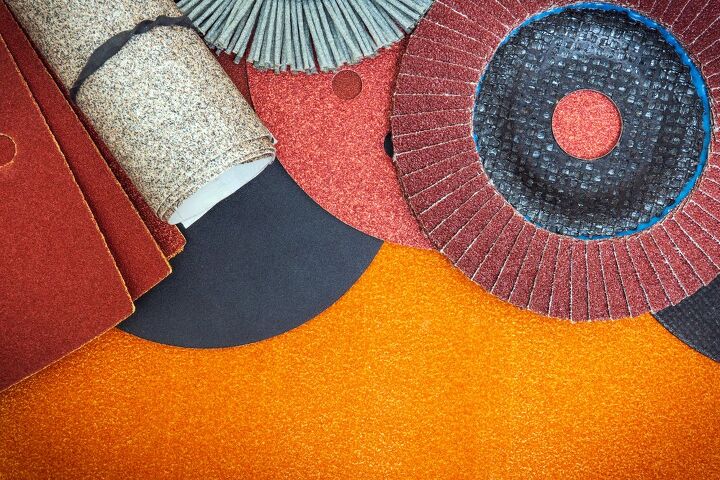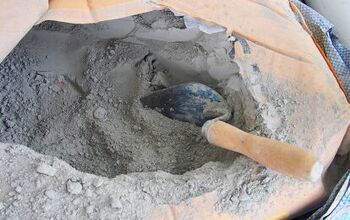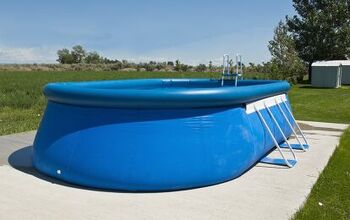Can You Sand Concrete With Regular Sandpaper? (Find Out Now!)

If you take a look at almost any project that involves adding a coat of paint or a stain, you will see that sanding the area down is a must. It’s the best way to keep things smooth and ensure that the paint sticks to the surface. With materials like wood, this is easy to do. When you find yourself with the task of sanding concrete, things get dicier. Can you even use sandpaper for a project like this?
Though you always have the option to sand concrete down using sandpaper, it’s rarely advisable. Even if the sandpaper is a part of a power tool setup, the truth is that sanding concrete using this method is time-consuming and rarely gets you the results you want. Use a grinder instead, if you can.
Sanding down concrete is a part of many different projects, and if you’re not used to it, then you may have a lot of questions. We did the research to help you figure out the answers.
Do You Need Concrete, Brick, or Stone Pros?
Get free, zero-commitment quotes from pro contractors near you.

What Is The Best Way To Sand Down Concrete?
Concrete is one of the hardest substances that you can sand down. This means that you should consider getting a specialty tool in order to get the job done. We suggest using one of the following tools to expedite this process:
- Grinder. A grinder is the easiest way to make sure you get the concrete smooth without it being too smooth. It also can be used to prep metal and actually polish concrete too. However, it’s not as large scale as a full-blown polisher. A 7 amp or 800-watt machine is a good start.
- Concrete Polisher. If you want the concrete to be smoothed out to the point that it actually shine, then go for a concrete polisher. Both wet and dry models can work where.
- Power/Belt Sander. While this is not the optimal tool to use, this is definitely up there as far as options go. These are good for simple sanding projects, but they won’t be able to sand down concrete to the point of it being shiny.
Why Isn’t Sandpapering A Good Option?
Sandpaper is capable of doing your sanding for concrete, but if you’re doing it by hand, it’s going to take a long time. Unless this is your idea of a good time is scrubbing away at concrete for hours on end, you’ll want to avoid doing it by hand. Even with sanders, it can take a while…and a lot of sandpaper. With that said, it’s still an option that you can use if you want to.
Are There Any Alternatives To Sanding Concrete?
While there are a bunch of ways to cut corners in construction, we do not suggest trying an alternative to sanding concrete. If you want to have a polished, smooth surface for a floor, you might be able to use a resin cover. However, we can’t guarantee that the results will be as good as they would be if the concrete was prepped traditionally.
What Grade Of Sandpaper Should You Use To Sand Concrete?
As you probably know, sandpaper comes in different grades—also known as grits. The type of sandpaper that you choose will change the overall effect of the sanding job. Here’s a quick run-through of what sandpaper grits you should use on your concrete:
- If you want to get a basic sanding job, you will need sandpaper that is coarse. Rough, thick sanding will remove the basic roughness that happens with poured concrete. This coarseness is a must for almost any project, at least as a start. A good grit to start with is between 40 to 80-grit.
- Smooth finishes and minor imperfections can be buffed out with medium to fine-grit sandpaper. These kinds of imperfections can include slightly rough edges or the occasional nick. 80 to 120-grit sandpaper is great for this. If you are going for a full polish, this is going to be the sandpaper that you choose after coarse, but before the superfine grit.
- Super polished, pretty concrete will need to be a super-fine level of grittiness. At least 400 grit will work well to give you the fully polished appearance that people love on flooring and luxury concrete items. If you can’t spring for superfine concrete, then use 200-grit at the very least if you want to get a polished look.
An Important Note About Shopping For Sandpaper That Is Meant To Be Used On Concrete
Concrete is notoriously hard, and if you need to get sandpaper for it, you should be aware of what that means for your project. If you want to go for regular sandpaper or sandpaper that will be added into a sander, you will need to pay double the amount you think you will need. Concrete has a knack for tearing up sandpaper and wearing it thin fast. So, prepare yourself for that.
If you want to save some money later on, the best thing that you can do is get some diamond sandpaper. Diamond sandpaper is made with real diamonds. The hardness of the diamonds will be enough to withstand concrete without actually getting worn down during the sanding process. While all sandpaper will eventually wear out or tear, it still makes a huge difference in how much sanding you get.
How Much Does Professional Concrete Sanding And Polishing Cost?
Sanding is not quite the same thing as polishing your concrete, though they both have nearly identical processes that involve sanding it down. The difference, of course, is the degree of sanding that’s required. This is the primary reason for the discrepancy in costs, though you may also notice that certain jobs will also require prep work that’s factored into the price tag.
If you want a basic sanding job done on a concrete floor, you should expect to pay between $1 and $3 per square foot. Getting your floors professionally polished, on the other hand, is between $3 to $12 per square foot. The reason for the higher price tag, sanding aside, is because most polishing companies also add a finisher and sealant to the flooring.
Do You Need Concrete, Brick, or Stone Pros?
Get free, zero-commitment quotes from pro contractors near you.

Related Questions
Is it a good idea to DIY a floor sanding project?
While there is nothing stopping you from sanding a floor on your own, the truth is that it’s rarely a good idea. Self-sanded floors have a tendency of having impurities or mistakes made in them. This ends up harming the seamless, perfectly polished look that people love to see in concrete flooring.Unless you have reason to be confident in the skills that you have with a sander, it’s a good idea to consider getting a professional to do it if you have the budget. Otherwise, you’ll be stuck doing repairs later on.
Can polished concrete crack?
Most people assume that the seamless veneer that polish concrete has means that it will be a solid choice. However, this is not always the case. Polished concrete can crack. In fact, studies show that polished concrete is more likely to crack than regular concrete. If you want to make sure that you have concrete that won’t crack, make sure that it’s properly polished and that it’s maintained well. Dips and heavy falls increase the risk of cracks immensely.
Related Articles

Ossiana Tepfenhart is an expert writer, focusing on interior design and general home tips. Writing is her life, and it's what she does best. Her interests include art and real estate investments.
More by Ossiana Tepfenhart


























![Cost To Drill A Well [Pricing Per Foot & Cost By State]](https://cdn-fastly.upgradedhome.com/media/2023/07/31/9074980/cost-to-drill-a-well-pricing-per-foot-cost-by-state.jpg?size=350x220)
